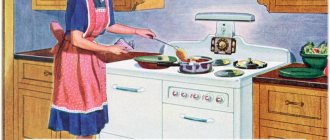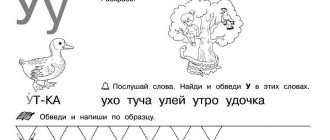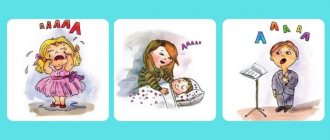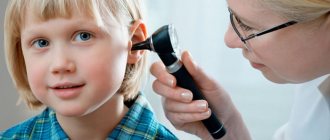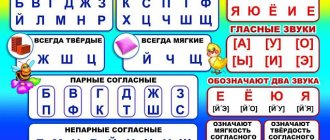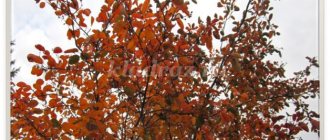Summary of the speech therapy lesson “Words denoting objects.”
Summary of a speech therapy lesson on the topic:
Words denoting objects.
Target:
Strengthen ideas about words denoting objects.
Tasks:
Educational:
- consolidate the assimilation of the lexical meaning of the word;
- promote the practical acquisition of words denoting living and inanimate objects;
- learn to ask questions to words-objects;
- learn to correlate words-objects with their graphic designation.
Correctional and developmental:
- correct logical thinking based on comparison of living and inanimate objects; auditory attention based on question discrimination;
— develop skills in sound and letter analysis and synthesis based on word transformation;
- develop the ability to select words for generalizing concepts;
- develop fine motor skills;
— to form the communicative side of students’ speech.
Educational:
- cultivate observation of linguistic phenomena, speech activity;
- cultivate perseverance.
Equipment:
images of a spaceship; split alphabet; subject pictures (cheese, onion, donkey, mittens, watermelon, doll, tit, shoes, fox, hat, mouse, squirrel); ball; typesetting cloth for frontal work; scheme for designating words-objects (stripe); panel "forest"; cards with images of words-objects (“living-non-living”).
Progress of the lesson
1. Organizational moment
.
- The one who guesses the word by its lexical meaning will sit.
A place where a lot of trees grow and you can pick mushrooms and berries. (Forest)
It's the time of year when apple trees bloom. (Spring)
A long break from studying for rest. (Holidays)
A building where children learn to read and write. (School)
The day on which the work week begins. (Monday)
2. Report the topic of the lesson.
— Today we are going on a space journey. We will fly to a distant planet, where we will study the characteristics of the local inhabitants.
— I have a ticket with the name of this planet. But there are pirates in space, and the name of the planet is encrypted so that the pirates won’t guess. However, smart guys will always be able to decipher it.
Sound analysis and synthesis:
- Name the first sound of each picture, say these sounds together and you will get the name of the planet. There are a number of pictures on the “ticket”: cheese, onion, donkey, mittens, watermelon.
- What happened? (“Words” - typed in letters of the cut alphabet.) “Ticket” is placed in the top row of the typesetting canvas.
“Now we know the name of the planet and we can hit the road.” - Open your notebooks. These are our logbooks. Indent 2 lines down. Write down today's date.
— We arrived on the planet of the Word. Look how many locals and tourists greet us. Let's determine which of them are the inhabitants of the planet
Carb Reading.
Waiting Table.
Telva Watermelon.
Vybmu Street.
- Read only the 1st column. Do you understand what is written here?
- What is this? (Set of letters
.)
- Read only the 2nd column. Do you understand what is written here? ( Words
.)
- Why do you understand the words, but not the set of letters? ( Every word has a meaning, words mean something.
)
3. Words denoting objects.
— The Planet of Words is divided into several parts. I don’t know which one we are in now. But the Words left us a clue. Look, there are letters in the envelope. I will put them in the second row of the typesetting canvas. Letter analysis and synthesis.
- Read it. Do you understand the meaning? What is this? ( Set of letters
.)
- Is it possible to form a word from these letters?
- What word did you get? (" items
»)
—What are the names of the inhabitants of this part of the planet? (“ words-objects
»)
On the speech therapist’s table there is a pen, a mirror, a notebook, and a textbook.
- Guys, give me the item. Is it possible to fulfill my request? Why? ( They didn’t name the item
.) Girl, come to me.
Is it possible to fulfill my request? ( No, because the girl is not named
.)
Conclusion: Every object has its own name, just like every person has a name.
Then the speech therapist names an object and asks the student to give it.
— We will denote words-objects with one stripe.
4. Physical education minute.
“Before we go further, I suggest you rest a little.”
- Complete each phrase, quickly choosing the right word. Count the number of words by bending your fingers.
- I know 5 dairy products...
- I know 5 names of birds...
- I know 5 deciduous trees...
- I know 5 wash supplies...
- I know 5 hats...
- I know 5 wild animals...
- I know 5 musical instruments...
- I know 5 sports...
- I know 5 names of insects...
5. Words denoting living and inanimate objects.
- So, we found out that words-objects live on the planet of words. But they are all very different. And these words need to be asked differently. Having seen one object, we will ask about it “Who is this?”, Having met another, we will ask the question “What is this?”
- This is because words-objects can be living and inanimate.
- Words denoting living objects answer the question... “Who?”
— Words denoting inanimate objects answer the question… “What?”
“Everything that moves on its own, eats, grows, is alive.” Inanimate objects cannot do all this.
- Let's get to know them better.
Working with cards.
— Draw a line from questions to objects.
6. Consolidation of knowledge on the topic.
1. - Words - objects invite you to play with the ball.
1st part of the game: while throwing the ball, the speech therapist names a word - an object - the child poses a question and determines a “living” or “non-living” object.
2nd part of the game: while throwing the ball, the speech therapist asks the question “who?” or “what?”, and the child must choose the appropriate word.
House - …? Who? - … Spoon - …? What? -...Mosquito -...? What? - … Snail - …? Who? - … Chair - …? What? - … Tiger - …? Who? -....
2. Game exercise “Walk in the forest.”
— On the planet of the Word, the forest is very similar to an ordinary terrestrial forest. Walking through the forest, we will make our way to our ship. On the way we will meet various objects and ask them questions “Who?” or “What?”
A panel depicting the forest and its inhabitants is exhibited.
7. Work on converting words.
- It's time for us to fly home. But in order to get on the spaceship, you need to complete a task: change the first sounds in words so that they answer the question “Who?”
— Write down a couple of words in your “flight logs.” ( Work at the board and in notebooks
).
Words: drop - heron, door - beast, poppy - cancer, house - catfish, donut - mouse.
Compose word combinations orally. Write down two of them. Underline the words-objects with one stripe.
8. Summary of the lesson.
- Here we are at home, on Earth. There are so many words around us.
- What words did you learn today? ( With words-objects
.)
- What did you learn about words-objects? ( That they are living and non-living
.)
— What questions are answered by living and inanimate words-objects? ( who what?
)
